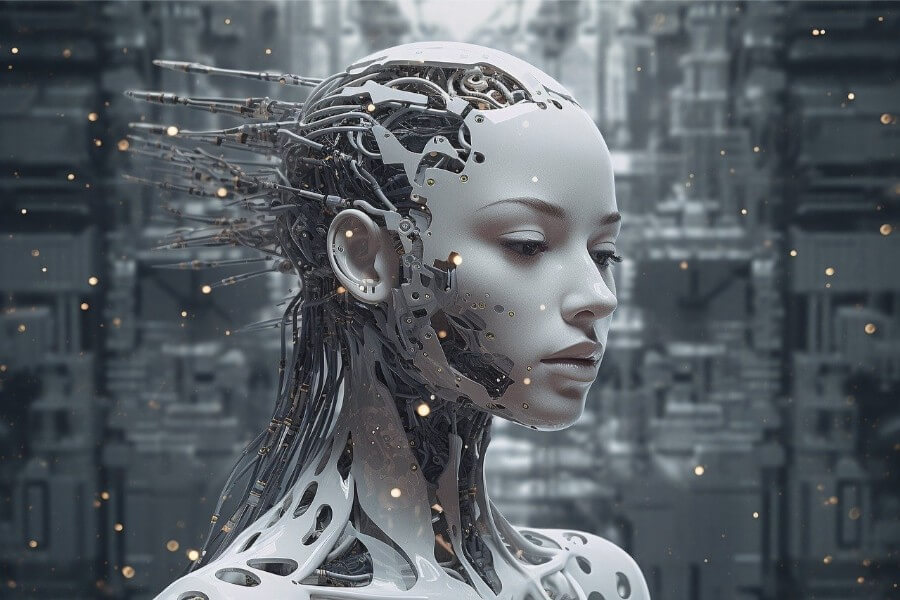
Copied and plagiarized content has already been a common issue and offers consequences. Any website offering duplicate content risks copyright allegations. Similarly, duplicating visual content like images puts you in hot water for copyright infringement risks.
Fortunately, the digital age has succeeded in capitalizing on sophisticated AI technology to simplify numerous tasks. With AI, you can find several options to reduce the risks of duplicate images.
But what are these methods, and how can you utilize them? The query isn’t complicated, and the blog post below will guide you further. Let’s not waste time learning how to reduce the risk of duplicate images with AI.
What Are the Risks of Using Duplicate Images?
By offering infringement notices, duplicate images might put you between a rock and a hard place. Images and other visual elements on a website are their intellectual property.
These intellectual components are usually protected under copyright laws. If you copy or steal these images, you directly infringe their copyright laws. The proprietary owner can charge you with infringement cases and proceed with legal actions.
Using duplicate images might also affect your reputation and credibility. If your audience finds out you publish duplicate photos, they will consider you incompetent. This reflects a lack of expertise and an image thief who compromises others’ intellectual property.
Similarly, your competitors and other similar sources won’t consider you legitimate. Labeling as a copycat or infringer will result in lost backlinks and collaboration opportunities.
How to Reduce the Risk of Duplicate Images with AI?
The risks of duplicate images are exceptionally grave, and one should try to prevent them. Leveraging AI technology is an intelligent act that can significantly reduce the risks of duplication in the following ways.
Use AI to Analyze Visual Similarity
Duplication may put you at consequential risks, and verifying your images can significantly protect you. Therefore, whether you suspect your picture might be duplicated or not, you should authenticate for visual similarity with AI technology.
Content-based image retrieval is the AI technique used for image similarity verification. You can use an AI reverse image search tool to find and retrieve images from visual databases and web pages. It identifies and fetches visually similar images against a given query image.
The photo search tool performs complex procedures, such as extracting and comparing characteristics like color, consistency, texture, and shape, to account for image similarity. This AI-powered search by image technology allows users to swiftly and efficiently discover visually similar photos.
Leverage Generative AI
Generative AI is among the cutting-edge and most helpful technologies these days. This form of AI technology generates text, images, videos, or other data with no effort other than entering the desired prompt.
The internet is flooded with AI image-generation tools powered by generative AI. You can use them to create original and duplicate-free images. You must only find a notable AI image generator and enter your text-based prompt.
The tool will understand your instructions and provide you with a visual in a flash of a second. The AI-generated image will be based solely on your prompt without duplicating it from any source.
For instance, if you type in the query “cat winking hysterically,” it won’t search the web to understand how it will seem. Instead, it utilizes generative AI algorithms and neural networks to offer an image that never existed.
Customize Photos with AI Editing Software
You can also use AI as an additional resource to make your images unique and reduce the risk of duplication. In addition to AI image-generating tools, several AI image-editing software programs help customize pictures.
You can capitalize on such tools to add your personalized touch and uniqueness to existing images. For instance, if you have licensed an image from stock image libraries but are wondering if someone else may already have used or might utilize the same image.
This may put you at risk of duplicate image penalties and consequences. So you can alter it with AI-based editing tools. These tools have astonishing editing features, styles, and filters to enhance, add effects and objects, and delete or design visuals.
Conclusion
Search engines have stringent policies regarding duplicate content, whether visual or textual. Therefore, one should be very careful when creating and publishing images online. Instead of hitting heads with conventional methods, leverage AI technology to make your visuals unique and reduce the chances of getting flagged as duplicate.
As mentioned above, you can utilize AI in various ways to continue your visual creation journey.